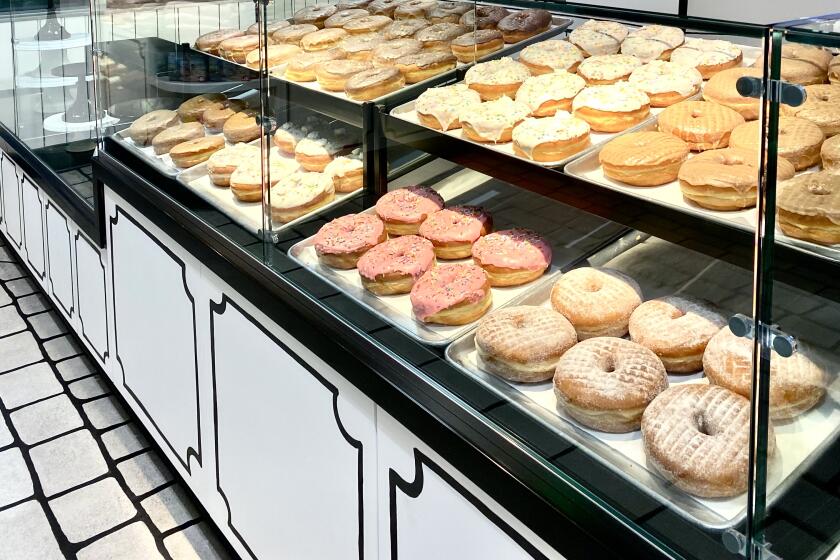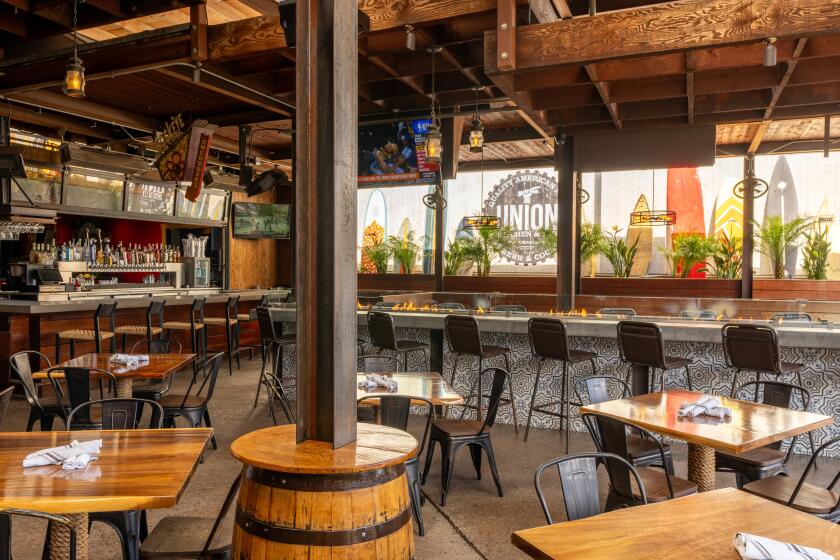Cage free is on the fast-food menu
The latest fad to sweep fast-food outlets these days isn’t a bacon-embellished premium burger or coffee house-style lattes. It’s all about the cage-free eggs that will eventually sit atop your breakfast sandwich.
Animal welfare advocates, not to mention increasingly health-conscious consumers, are cheering the move by quick-service chains, from McDonald’s to Panera, to switch to eggs laid by uncaged chickens.
San Diego-based Jack in the Box is the most recent entrant in the race to go cage-free, although it’s chosen not to crow about it.
Its commitment to a cage-free future is contained in the company’s recently updated animal welfare statement in which it signals its intent to transition the majority of its egg supply to “cage-free by 2020.” A full changeover would be completed by 2025, the company says. That’s about the same timeline contemplated by McDonald’s.
The change in direction, says Jack in the Box, was inspired by a growing interest among consumers in where their prepared food is sourced.
It’s also seen as the right thing to do, a point pressed for years by animal rights activists who have decried the cramped, inhumane conditions suffered by chickens packed so tightly in cages they have no room to walk or spread their wings.
“Although we don’t raise or process animals, animal welfare has always been important to us,” said Jack in the Box spokesman Brian Luscomb. “Cage-free barns have several advantages over conventional housing systems. Birds have more room to move around and exhibit natural and typical behaviors.
“We set a realistic goal that gives our suppliers adequate time to fulfill our egg needs.”
The Humane Society of the United States takes some credit for what it acknowledges is not a recently hatched initiative. The group has worked closely with Jack in the Box over the last decade, prodding the San Diego chain to make the switch to cage-free eggs, said Matthew Prescott, senior food policy director for the Humane Society.
“We’ve been in continual dialog with Jack in the Box, helping them address the issue, assess the landscape of producers, who has product available, the evolving science around the issue and consumer sentiment,” he said.
“In fairness, this is an issue that Jack in the Box has been working to address for several years but I’m sure it didn’t hurt that McDonald’s and other companies have said they’re doing it too. When egg producers see these new policies, no egg producer in their right mind is going to want to build a new barn with cages.”
Given the huge volume of eggs consumed by fast food patrons — McDonald’s alone purchases 2 billion annually for its U.S. outlets — expect the transition to take years to complete.
While Taco Bell expects to go fully cage-free by the end of next year, its breakfast business pales in comparison to a chain the size of McDonald’s.
Local egg rancher Frank Hilliker is rapidly transforming his Lakeside farm into more of a cage-free facility, but points out that it will take time for the country’s suppliers to catch up with mounting demand.
“For me, it’s an economic decision. In a cage-free barn, I can put 9,000 chickens in there, whereas in my cage barn, I can only put about 2,400,” said Hilliker. “I’m doing a pretty good job selling eggs to the cage-free market in San Diego. And I might as well go cage-free, because I don’t want someone to come along in 10 years and say your cages are no good anymore. Then I’m throwing good money after bad.”
His decision to convert his hen houses to cage-free operations is also driven by a 2008 statewide proposition that went into effect this year and prohibits the confinement of farm animals.
“So goes California, so goes the rest of the nation,” Hilliker said.
The recent mania for cage-free eggs is simply an extension of the whole movement toward more natural foods, whether it’s hormone- and antibiotic-free meats and chicken, grass-fed cattle or organic produce, says Darren Tristano, president of Technomic, a restaurant research firm in Chicago.
Even General Mills and the Kellogg Co. have jumped on the cage-free bandwagon, committing to make the switch over the next decade.
“It all seems to be crystalizing with consumers because their concern around healthfulness has a lot to do with ingredients and how animals are raised as opposed to low-fat and low-salt, which were the more traditional healthy terms,” Tristano said.
“The economics, though, are more difficult because there is a higher price point, so there are chains and independents that won’t do this and as a result will have better margins.”
As for the potential health benefits that may accrue to all those Egg McMuffin and Breakfast Jack aficionados, don’t kid yourself, advises farmer Hilliker, who estimates a 20 percent to 30 percent higher cost for cage-free eggs.
“I can have the same exact chicken in a cage facility or a cage-free facility and feed them the same thing, and they’re going to be the same egg, but people want the chickens to be happier and think that if the chickens are happier then the eggs are better,” Hilliker said.
“They’re not any better for you. An egg is an egg.”
lori.weisberg@sduniontribune.com ▪ (619) 293-2251 ▪ Twitter:@loriweisberg
Get U-T Business in your inbox on Mondays
Get ready for your week with the week’s top business stories from San Diego and California, in your inbox Monday mornings.
You may occasionally receive promotional content from the San Diego Union-Tribune.












